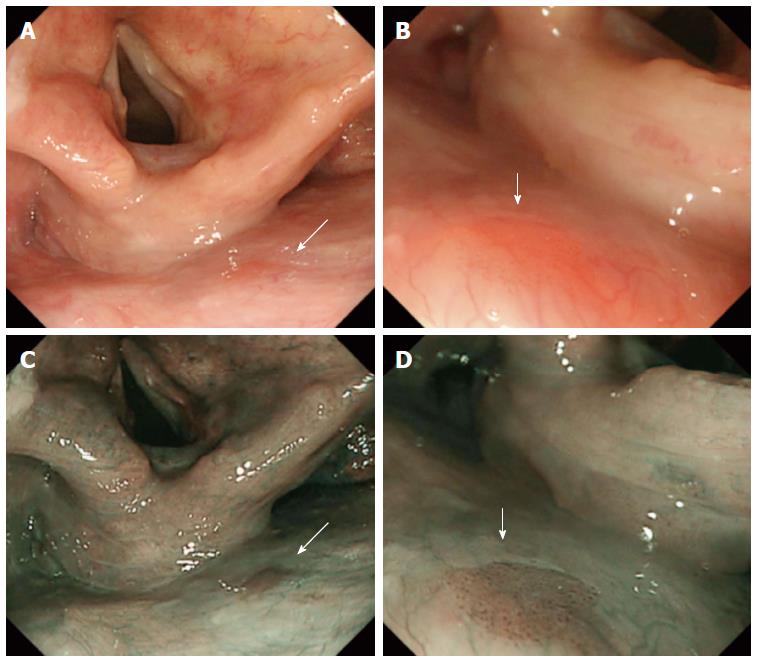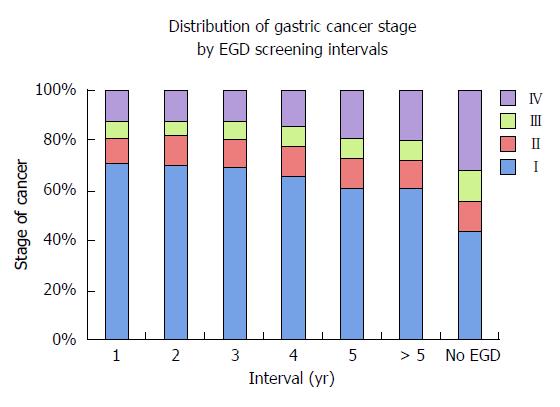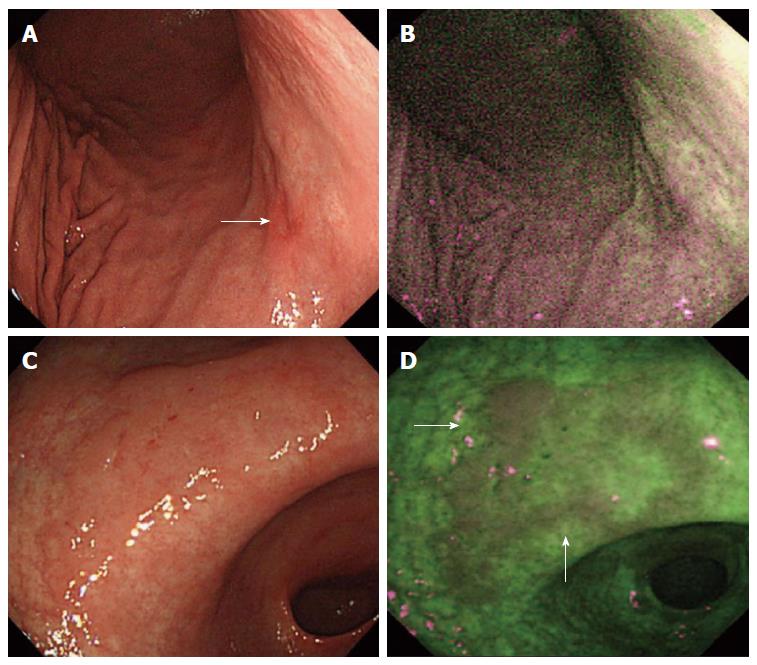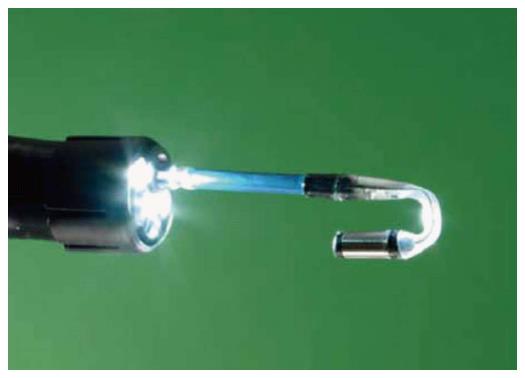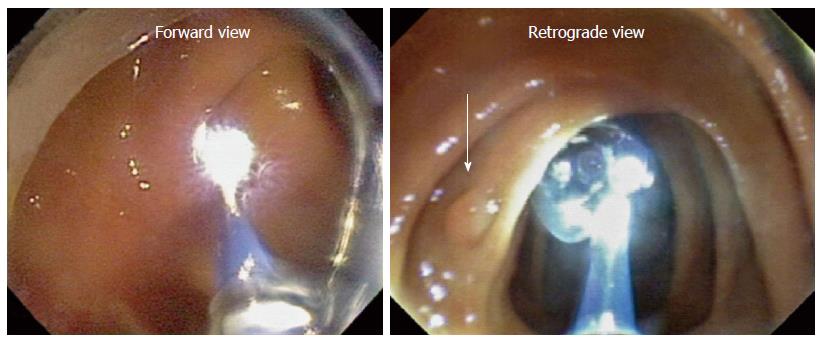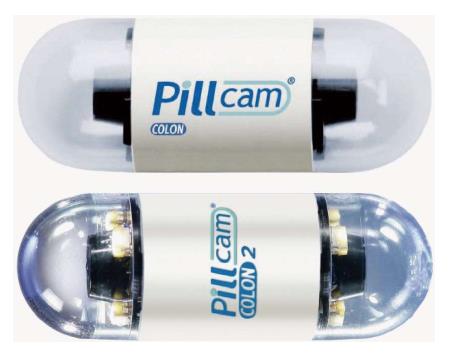Copyright
©The Author(s) 2015.
World J Gastroenterol. Sep 7, 2015; 21(33): 9693-9706
Published online Sep 7, 2015. doi: 10.3748/wjg.v21.i33.9693
Published online Sep 7, 2015. doi: 10.3748/wjg.v21.i33.9693
Figure 1 Differences in white light imaging from narrow-band imaging.
A: White light imaging (WLI) displays an erythematous area in the posterior wall of the hypopharynx (white arrow); B: Magnifying WLI reveals a minimally erythematous patch with tiny microdots (white arrow): C: Narrow-band imaging (NBI) locates a distinct brown lesion in the posterior wall of the hypopharynx (white arrow); D: Magnifying NBI also demonstrates a distinct brown lesion with microdots that can be distinguished from the healthy mucosa surrounding it (white arrow)[20].
Figure 2 Diagnosis of stage IV gastric cancer increased substantially when the screening intervals extended beyond 3 yr.
Adapted from Nam et al[41]. EGD: Esophagogastroduodenscopy.
Figure 3 Autofluorescence imaging’s limited role in certain lesions and benefit in others.
A: White light imaging (WLI) displays a red lesion with a slightly depressed area on the bottom right corner (white arrow); B: Autofluorescence imaging (AFI) does not demonstrate a distinct lesion that can be ruled neoplastic; C: WLI made it difficult for the endoscopists to identify the isochromatic flat lesion: D: AFI displays a well-marked lesion with slightly raised borders (white arrows)[50].
Figure 4 Third Eye Retroscope® attachment, extends out in its retroflexed position[69].
Figure 5 Advantage of retrograde visibility.
The retrograde view (right) clearly sights a polyp (arrow) that the forward view (left) would not have spotted[67].
Figure 6 First and second generation Colon Capsule Endoscopy by Given Imaging[71].
- Citation: Ro TH, Mathew MA, Misra S. Value of screening endoscopy in evaluation of esophageal, gastric and colon cancers. World J Gastroenterol 2015; 21(33): 9693-9706
- URL: https://www.wjgnet.com/1007-9327/full/v21/i33/9693.htm
- DOI: https://dx.doi.org/10.3748/wjg.v21.i33.9693













